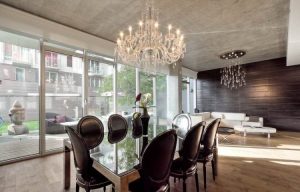
29 Jan Lighting and Health
Light always plays an essential part in our lives. No matter our age, good lighting is important. Much research has been done into the effects of lighting and how it impacts our feelings. There is a lot of evidence to show that the way we light our homes and workplaces has a strong impact on our health and well-being.
Light and lighting – what’s the difference?
Natural daylight is provided from the sun. Light brought into the house through a window is a good example of this. We also create light by using a lot of different lights and lamps. Even simple candles create light. Create beautiful light fittings in your home with stylish Ceiling Roses to really feel the benefits. For a wide range, visit a site like https://www.creative-cables.co.uk/2648-ceiling-roses
Can light really affect how we feel?
Imagine you work in an office with a very poor light. Your job requires reading and writing and administrative work. There is a strong chance that you will suffer from eye fatigue; mood swings and have frequent headaches. The chances of this happening are slim as workplace regulations would not allow it, however there are no such protections in place covering activities at home. Similarly, if you try to create the right atmosphere to get a good night’s sleep, I am sure that you are not going to install a 500W spotlights in the bedroom! This is an extreme example but it shows how important light can be in our daily lives.
We have known for a long time that the way we feel fluctuates depending on the season, particularly in the autumn and winter months. People can feel as if they don’t have as much energy and are generally less likely to be active. Numerous studies have been conducted and have shown that there is a definite change in our outlook for the winter. It has been established that this mood changes instantly when there are fewer hours and lower quality of daylight.
We have all heard the saying ‘It’s winter blues’ but for some people, it is more severe and can lead to Seasonal Affective Disorder (SAD).
Lighting and mood
Even different colours have a marked effect on how we feel. Choosing the right colours for our environment has long been recognized as an important part of home design. There is also no doubt that the effects of different lighting impacts our mood. How many of us would plan a romantic dinner under a glaring spotlight? So, how can we make sure that we have a variety of different lighting options to create the atmosphere that we want? It cannot be done with just one main source of light.
Lighting effects to avoid:
harsh light can make you feel tense and uncomfortable and prevent you from sleeping
direct glare, from a bare bulb for example, can cause headaches
Inadequate lighting when doing tasks such as reading or sewing can cause migraines
dark environments can cause depression and lethargy
Desired lighting effects:
use indirect lighting
A good contrast in lighting between each area of your home avoids moving from a very dark room to a very bright room
Use several light sources whenever possible such as table lamps, floor lamps and wall lamps as these can be used to avoid shadows and create the right mood
Always spread the light



No Comments